-
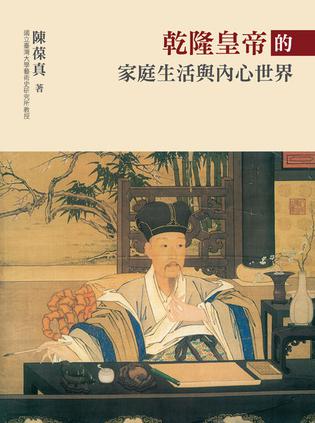
乾隆皇帝的家庭生活與內心世界
乾隆皇帝(清高宗)是中國帝制史上最後一位盛世之君。他在位六十年,文治武功盛極一時,在清初政治、軍事、經濟、社會、宗教、藝術和文化等各方面都留下不可忽視的業績和影響。有關他的記載史不絕書。但他究竟是怎樣的一個人?他的內心深處最主要的關切又是什麼?這都令人好奇。 本書結合藝術史和歷史學的研究方法,藉由相關圖像和史料,從人性化的角度和常理心,去觀察和剖析乾隆皇帝的家庭生活和他對待所藏藝術品的態度。作者細膩而深入地解讀乾隆皇帝在處理以上種種問題時,心中所可能經歷的感性與理性的衝突,以及他最後的抉擇和表現,據此勾勒出這位歷史名君個人的內心生活與價值取向。 本書所收的五篇文章,主題都是有關乾隆皇帝(清高宗)的家庭生活與藝術收藏。作者以圖像為切入點,輔以相關的詩文和史料,探討乾隆皇帝與其父親、母親、后妃、子孫等核心家庭成員的互動情形,和他對所藏藝術品的態度。由其中,我們發現身為皇帝的他,也有和常人一般的喜怒哀樂,因此在處理國事和家事時,也難免在感性與理性之間掙扎;而他最終極的關注乃在於形塑自己成為儒家理想中的聖主明君。 第一篇:〈雍正與乾隆二帝「漢裝行樂圖」的虛實與意涵〉。作者認為:兩位皇帝的「漢裝行樂圖」只是虛構,而非紀實之作。因為衣冠是一個民族和文化的象徵,所以清太宗建國以來便立下祖訓:國語騎射是滿洲傳統文化,後代子孫永遠不得改服易制。清朝皇帝始終遵守這個祖訓。既如此,這兩位皇帝為何會有穿著漢裝的虛擬圖像?其目的之一可能是藉此宣示他們不但身為滿、漢二族的統治者,而且也代表了這兩種文化的精粹。 第二篇:〈乾隆皇帝對孝聖皇太后的孝行和它所顯示的意義〉。本篇揭示了乾隆皇帝對其生母孝聖皇太后先則疏遠,後則極盡孝養之能事的事例、原因、和意義。他對太后無微不至的孝行,除了出於真心之外,應也有意藉此將自己形塑為一個遵守祖訓、實踐儒家核心思想、以孝治天下的聖主仁君。 第三篇:〈《心寫治平》── 乾隆帝后妃嬪圖卷和相關議題的探討〉。本文以風格分析結合史料,解決了該作品在製作過程方面的問題;同時述及乾隆皇帝與其中幾位后妃之間的愛情故事。本圖卷的圖像意涵在於顯示乾隆皇帝家庭生活的和諧;藉此反映他是實踐儒家修身、齊家、治國、與平天下的理想君主。 第四篇:〈從四幅「歲朝圖」的表現問題談到乾隆皇帝的親子關係〉。本文以四幅「歲朝圖」在圖像方面的異、同、和變化特色,結合史料,揭示了乾隆皇帝二度立嫡失敗的心情,和他對兩個早逝皇子獨特的紀念方式;以及心中對於子孫繁昌、鞏固祖宗家業的深切期望。此外,本文又論及他嚴格教育皇子、和以理性嚴選嗣君的經過。 最後一篇:〈乾隆皇帝與《快雪時晴帖》〉。作者在本文中先辨識了乾隆皇帝自乾隆十年到六十年、及退位之後,每年在《快雪時晴帖》上所作共七十四則題識的位置、順序、和內容。由其中,作者發現乾隆皇帝在欣賞那件珍品時心情上的轉變:乾隆三十年之前,他較關注那件作品本身或與它相關的藝術方面的問題;其後,他漸轉變為關心農情、戰役、母喪、和感謝天恩等事。由此反映了他心中所在意的終究是「政權高於藝術」的價值觀。 簡言之,本書各篇研究精闢,論辯合理,見解獨到,發前人所未及,極具可信度和學術價值;且圖史資料豐富精彩,行文流暢,宜精讀、宜清賞,皆有助於我們對乾隆皇帝個人的認識。 -
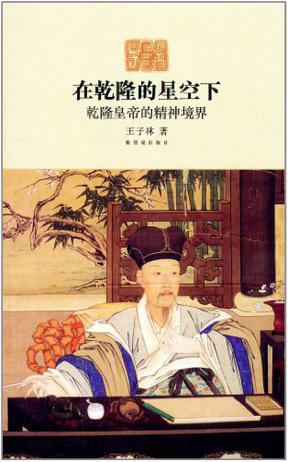
在乾隆的星空下
乾隆并不仅仅是他本人的名号,而是一个符号的象征,有着丰富的传统文化精神内涵。历史上没有一个帝王像他这样以一生的时间借用建筑,笔墨,器物等把传统文化精神之魂—仁,演绎得如此的成功和完美。 故宫所藏原状文物几乎每个角落都留下乾隆的痕迹。乾隆在他漫长的人生道路和执政生涯中定有一种精神信念支持着他。本书以物见史,以物见心,通过对所藏文物来展现乾隆的精神风貌。 -
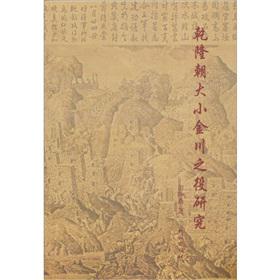
乾隆朝大小金川之役研究
《乾隆朝大小金川之役研究》首先对嘉绒藏区的地理位置藏族的分布、族源,土司的来历、分布,以及大小金川土司的概况。接下把清朝对嘉绒的经营、统治,以及后来大、小金川战役和战役之后乾隆帝的善后措施及其对两金川的影响做了详细的描述。 -
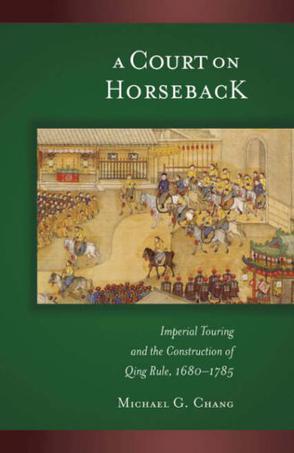
A Court on Horseback
Between 1751 and 1784, the Qianlong emperor embarked upon six southern tours, travelling from Beijing to Jiangnan and back. These tours were exercises in political theatre that took the Manchu emperor through one of the Qing empire's most prosperous regions. This study elucidates the tensions and the constant negotiations characterising the relationship between the imperial centre and Jiangnan, which straddled the two key provinces of Jiangsu and Zhejiang. Politically, economically and culturally, Jiangnan was the undisputed centre of the Han Chinese world; it also remained a bastion of Ming loyalism and anti-Manchu sentiment. How did the Qing court constitute its authority and legitimate its domination over this pivotal region? What were the precise terms and historical dynamics of Qing rule over China proper during the long 18th Century? In the course of addressing such questions, this study also explores the political culture within and through which High Qing rule was constituted and contested by a range of actors, all of whom operated within socially and historically structured contexts. The author argues that the southern tours occupied a central place in the historical formation of Qing rule during a period of momentous change affecting all strata of the 18th-Century polity. -
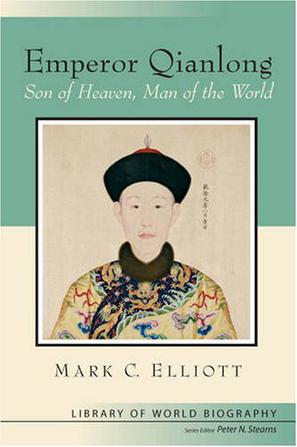
Emperor Qianlong
This new entry in the Longman Library of World Biography series offers an intimate and provocative account of the Manchu emperor Qianlong (1711-1799), one of the world,s great empire-builders, who helped build the foundation of the modern Chinese nation. During the 64 years of Qianlong,s rule, China,s population more than doubled, its territory increased by one-third, its cities flourished, and its manufactures - tea, silk, porcelain - were principal items of international commerce. Based on original Chinese and Manchu-language sources, and drawing on the latest scholarship, this is the biography of the man who, in presiding over imperial China,s last golden epoch, created the geographic and demographic framework of modern China. This accessible account describes the personal struggles and public drama surrounding one of the major political figures of the early modern age, with special consideration given to the emperor,s efforts to rise above ethnic divisions and to encompass the political and religious traditions of Han Chinese, Mongols, Tibetans, Turks, and other peoples of his realm. In addition to becoming familiar with one of the most remarkable figures in world history, readers will find that learning about Emperor Qianlong will add greatly to their appreciation of China,s place in the world of the eighteenth century and will deepen their understanding of China,s place in the world today. -
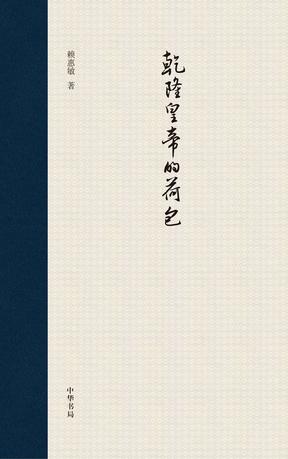
乾隆皇帝的荷包
本書分為兩部分,討論十八世紀乾隆年間的皇室財政。第一部探討皇室的財政收入:地租、關稅、當鋪、發商生息以及鹽商之額外支出。皇室財政和國家財政不同的是,田賦為國家主要的收入來源,清皇室雖有百萬畝以上的土地,但其重要收入則來自商業方面。例如:皇室憑藉權力介入鹽稅和關稅的稅金分配,並將皇室資金借給商人,賺取利息等;再者,鹽商或廣東十三行的行商等富商巨賈在各種慶典報效皇帝,動輒百萬兩,也成為皇室收入來源之一。 第二部討論乾隆皇帝在北京、熱河等處興建藏傳寺廟,並賞賜喇嘛土地、口糧、衣單等。藏傳佛教在蒙、藏地區有長久歷史,乾隆皇帝在位期間,巧妙地利用藏傳佛教,並藉助黃教領袖的社會地位與政治影響力,號令蒙、藏各部,整合與穩定蒙、藏社會,維護統治目的。面對新的財政支出,乾隆皇帝並未增加以田賦為主的稅收,而是憑藉權力擷取商業上的利益,將這些資源轉為在北京、熱河建造藏傳佛寺,打造另一個藏傳佛教中心。 除了宗教上的意義外,乾隆皇帝修建藏傳佛寺也有經濟的意義。以宗教的力量吸引蒙古人到北京、熱河、五台山等地朝聖,寺廟成為集市和進香活動的中心,豐富了商品交換和地方經濟發展。宗教與貿易,如同乾隆皇帝的雙翼,因而得以有效地統治新的疆域,解決中國長期的邊患問題。比起明代和蒙古戰爭每年動輒耗費七八百萬兩來說,更呈顯乾隆皇帝成功的統治政策。但在清朝外患問題變少的同時,因為各項稅收所引起的內部問題卻也層出不窮,種下日後清朝衰敗的遠因。